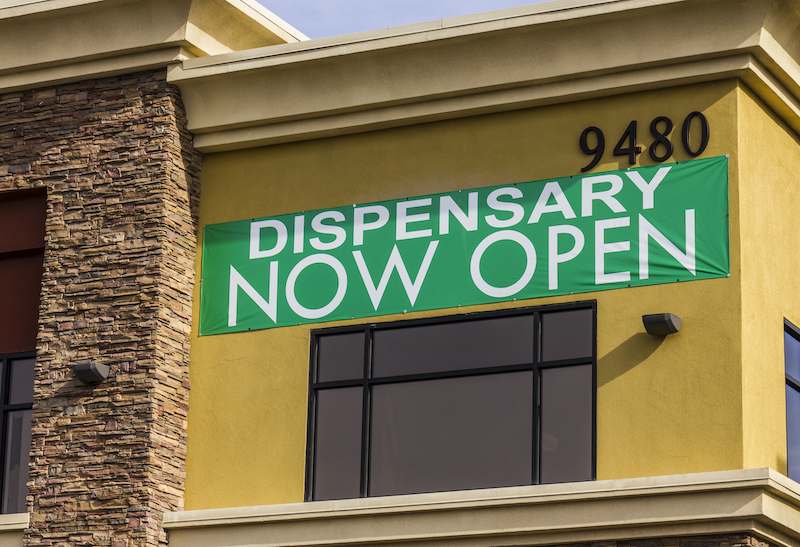Plus: New data on tobacco consumption during COVID, and a drop in opioid prescriptions for children and teens following surgery
By William Wagner
Each year more states legalize recreational marijuana—the tally now stands at 18. An unexpected consequence has been less demand for prescription medications, say researchers from Cornell University and Indiana University.
We also take a look at a study on tobacco use trends during COVID and a report on the decrease in pediatric opioid prescriptions following surgery.
From Health Economics:
Legal Weed’s Impact on Prescription Meds
An upside to the legalization of recreational marijuana: It has significantly lessened demand for expensive prescription drugs from state Medicaid programs—specifically, medications for pain, depression, anxiety, sleep, psychosis and seizures. A newly published study in the journal Health Economics is among the first to examine the impact recreational marijuana legalization has on the consumption of prescription drugs. The researchers arrived at their conclusions by analyzing data from the Centers for Medicare and Medicaid Services in all 50 states from 2011 to 2019. It was during this period that the number of states legalizing weed for recreational use began to escalate.
From both clinical and financial perspectives, the study’s findings are welcome, says co-author Shyam Raman, a doctoral student at Cornell: “These results have important implications. The reductions in drug utilization that we find could lead to significant cost savings for state Medicaid programs. The results also indicate an opportunity to reduce the harm that can come with the dangerous side effects associated with some prescription drugs.”
From the Ochsner Journal:
Cigarette Smoking Trends During COVID
Statistics gathered by a research team from Florida Atlantic University’s Schmidt College of Medicine and Baylor College of Medicine reveal a mishmash of cigarette smoking trends during the COVID era. The cross-sectional survey took place from June to October 2020 and probed three categories: changes in tobacco use; impact of and coping strategies for COVID; and exposure to COVID and proactive measures taken.
“These data may aid healthcare providers to identify and provide counsel to cigarette smokers at greater risk for increasing tobacco consumption during current and future stresses.”
—Charles H. Hennekens, Florida Atlantic University
Overall, 28.2% of current smokers reported increased tobacco use, 17.3% decreased tobacco use and 54.5% no change. Among the takeaways: Individuals whose tobacco use increased attributed it to uncertainty about the future, loneliness and boredom from social distancing, and the disruption of daily routines. Those who smoked less were better able to deal with social distancing and formulate preventative strategies.
The results, say the researchers, are useful even beyond the context of the pandemic. “These data may aid healthcare providers to identify and provide counsel to cigarette smokers at greater risk for increasing tobacco consumption during current and future stresses, such as the COVID-19 pandemic,” says Florida Atlantic’s Charles H. Hennekens, MD, DrPH, senior author of the study. “All of these efforts have the potential to reduce many premature deaths from cigarette smoking.”
As we’ve indicated previously in this space, tobacco use remains a particularly lethal problem, contributing to more than 480,000 deaths annually in the U.S, according to estimates from the Centers for Disease Control and Prevention (CDC). That’s nearly five times the number of people who were claimed by drug overdoses during the record-setting 12-month period ending in April 2021.
From Pediatrics:
A Drop in Pediatric Opioid Prescriptions
Fewer children and teens are being administered opioid prescriptions for pain following surgery, according to a study out of the University of Pennsylvania School of Medicine. The researchers mined an insurance database for information on 124,000 children and teens who underwent common procedures from 2014 to 2019, such as an appendectomy, tonsillectomy or knee surgery. During the time period studied, the percentage of teens who had opioid prescriptions filled after the surgeries dropped from more than three-fourths (78.2%) to under half (48.0%). For school-age children the rate fell from 53.9% to 25.5%, and for pre-schoolers from 30.4% to 11.5%. Average dosages dispensed also declined by some 50% across all age groups.
“Our findings demonstrate that pain treatment for children and adolescents undergoing surgery has changed dramatically over the past five years,” says Mark Neuman, MD, senior author of the study. “Understanding what these trends mean for patient experiences and health outcomes is a key next step.”
Photo: Elsa Olofsson













